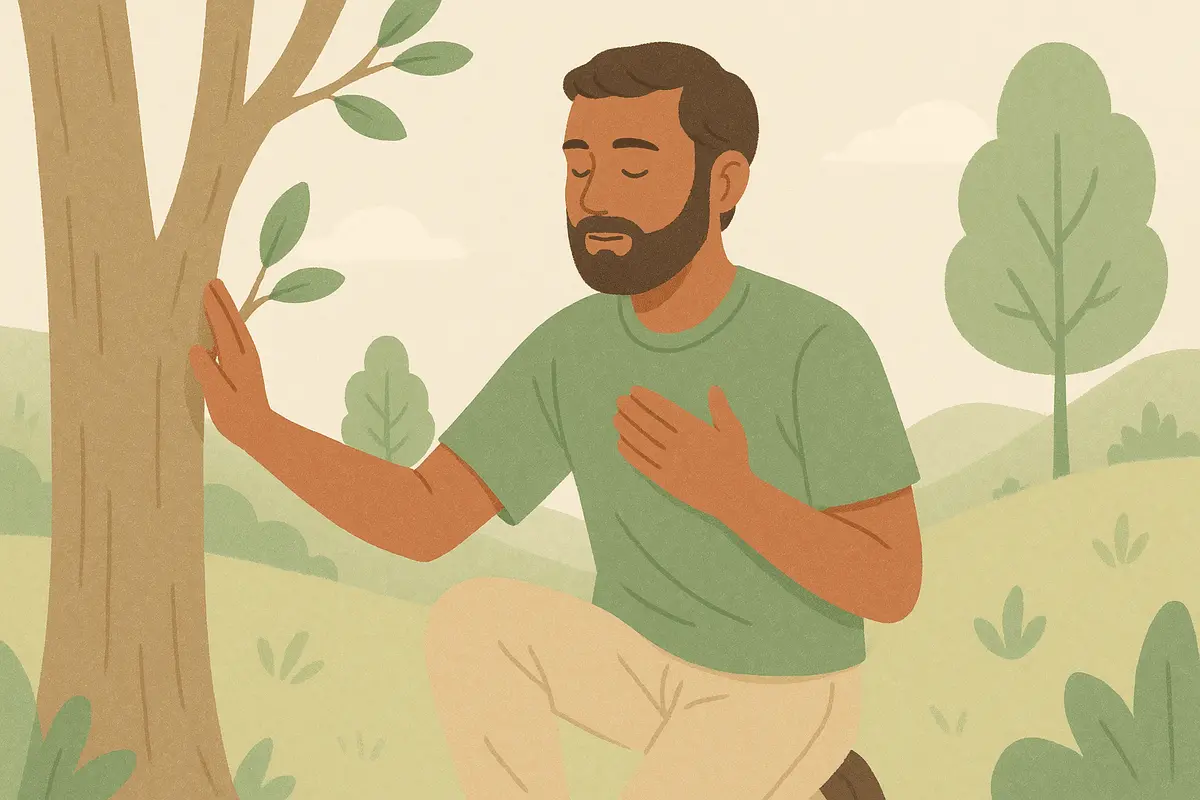The 5-4-3-2-1 grounding technique uses your five senses to quickly anchor attention in the present moment during anxiety, panic attacks, or overwhelming emotions, providing rapid relief in just 2-5 minutes.

Think of your mind as a runaway train. Anxiety shovels coal into the engine, making thoughts race and muscles tense. The 5-4-3-2-1 technique is the handbrake. By naming five things you see, four you feel, three you hear, two you smell, and one you taste, you force your brain to pay close attention to what's happening right now. That shift cuts power to the "fight, flight, freeze, or fawn" engine and lets your body's natural brakes take over. This means slower breathing, steadier heart rhythm, and clearer thinking.
Doctors and therapists use grounding daily because it's quick, easy to carry with you, and safe. Studies show that using your senses to ground yourself lowers distress and improves emotion control in trauma survivors, especially when combined with therapy. For many people it's the fastest way to regain a sense of control before moving on to deeper coping skills or professional support.
The 5-4-3-2-1 grounding technique works through several brain and mental processes that create fast anxiety relief and emotional stability.
When you're having a panic attack, your brain gets stuck focusing on scary thoughts or painful memories. Think of your mind like a flashlight that's gotten stuck shining on something frightening. The technique helps you move that flashlight beam away from the scary stuff and point it at safe, real things around you right now. This breaks the cycle of anxious thoughts that keep making you feel worse.
Using all five senses in order tells your brain to pay attention to what's actually happening around you instead of the worrying thoughts in your head. Your brain gets busy noticing real things like the color of a wall or the sound of air conditioning. This immediate, real input stops the distressing mental loops and helps your body start to calm down.
When you're experiencing flashbacks or feeling disconnected from yourself, your attention gets pulled toward distressing memories or threats that aren't actually happening right now. Grounding techniques help you direct your attention back to the present moment and towards safety in the here-and-now. This is crucial for trauma recovery and anxiety management.
The structured steps of the technique give your brain a specific job to focus on. This mental task requires concentration, which effectively stops anxious thought spirals or times when you feel disconnected from reality. This focused attention helps bring back clear thinking that may be hard to access during high stress.
Your body has two main operating systems - one for emergencies (fight or flight) and one for rest and calm. The technique activates your rest-and-calm system, which is responsible for your body's "rest and digest" state. This counters the emergency system's fight-or-flight response and helps you feel more peaceful.
Research shows that grounding exercises help reduce how severe dissociative symptoms feel in trauma survivors, especially when combined with therapy. Studies confirm that grounding techniques work well for reducing anxiety and depression symptoms, showing significant improvements over traditional treatments alone.
Unlike medications or complex interventions, the 5-4-3-2-1 technique requires no special tools or training. You can practice it quietly in most situations, providing immediate relief when you need it most. This easy access makes it particularly valuable for managing anxiety in real-world situations.
"I can't focus on my senses during panic." - Start with the easiest sense for you (often sight) and spend extra time there before moving to others. Even partial completion helps interrupt the panic cycle.
"I don't notice any smells or tastes." - This is common and normal. Move to a different location if possible, or focus extra attention on the senses that are working for you without forcing unavailable ones.
"The technique isn't working." - Try sticking with it for a bit longer, or combine it with gentle movement or deeper breathing. Different techniques work for different people, and effectiveness improves with practice.
"I feel more anxious focusing on my body." - Some trauma survivors initially feel uncomfortable with body awareness. Start with external senses (sight, sound) and gradually work toward touch as comfort develops.
"I can't remember the steps during crisis." - Keep a simple reminder on your phone: "5 see, 4 touch, 3 hear, 2 smell, 1 taste" or practice the sequence daily when calm to build muscle memory.
"People might notice me doing this." - The technique can be done very quietly - most people won't notice you quietly observing your environment, and many steps can be done internally.